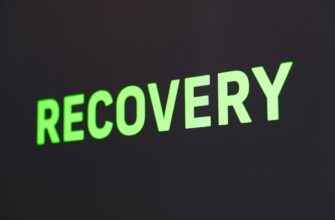💎 USDT Mixer — Your Private USDT Exchange
Mix your USDT TRC20 instantly and securely. 🧩
No sign-up, no data logs — just total privacy, 24/7. ✅
Ultra-low fees starting at just 0.5%.
- Why Protecting Your Ledger is Non-Negotiable
- Step-by-Step: Setting Up Your Ledger Securely
- The Golden Rule: Protecting Your Recovery Phrase
- Daily Safety Habits for Ledger Users
- What If Your Ledger is Compromised?
- Frequently Asked Questions
- Can someone steal my crypto if they have my Ledger device?
- Is it safe to update my Ledger firmware?
- Should I store my recovery phrase in a password manager?
- Can I use the same Ledger for multiple cryptocurrencies?
- What makes Ledger safer than software wallets?
- How often should I check my Ledger security?
Why Protecting Your Ledger is Non-Negotiable
As a crypto beginner, your Ledger hardware wallet is your fortress against digital threats. Unlike software wallets, Ledger keeps your private keys offline – but only proper protection makes it truly secure. Every year, millions are lost to preventable mistakes like phishing scams, physical theft, or recovery phrase exposure. This guide breaks down essential security steps into simple actions anyone can follow.
Step-by-Step: Setting Up Your Ledger Securely
Start strong with these foundational measures:
- Buy Directly from Ledger: Avoid third-party sellers to prevent tampered devices.
- Verify Authenticity: Use Ledger’s genuine check in Ledger Live app before setup.
- Initialize Yourself: Never use pre-configured devices – your wallet should generate a new 24-word recovery phrase during setup.
- PIN Creation: Choose a 4-8 digit PIN unrelated to personal information (e.g., avoid birthdays).
The Golden Rule: Protecting Your Recovery Phrase
Your 24-word recovery phrase is the master key to your crypto. Compromise this, and you lose everything. Follow these critical protocols:
- Never Digitize It: No photos, cloud storage, or text files. Paper/metal only.
- Use a Cryptosteel or Billfodl: Fire/water-resistant metal backups outperform paper.
- Store in Multiple Locations: Split phrase halves between a home safe and bank deposit box.
- Zero Sharing: Legitimate entities will NEVER ask for your phrase – treat requests as scams.
Daily Safety Habits for Ledger Users
Maintain security with these ongoing practices:
- Verify Receive Addresses: Always confirm addresses on your Ledger screen before receiving funds.
- Update Firmware Promptly: Enable auto-updates in Ledger Live for critical security patches.
- Use a Dedicated Computer: Reserve one malware-free device for crypto transactions only.
- Enable Passphrases (Advanced): Add a 25th word for plausible deniability and extra security layers.
What If Your Ledger is Compromised?
Act immediately if you suspect issues:
- Device Lost/Stolen: Use your recovery phrase to restore funds on a new Ledger – your crypto isn’t on the physical device.
- Phishing Exposure: Never enter your phrase online. Reset your device and transfer funds if you accidentally shared it.
- Malware Scare: Wipe your Ledger (entering wrong PIN 3 times) and restore with your secure recovery phrase.
Frequently Asked Questions
Can someone steal my crypto if they have my Ledger device?
No – without your PIN, the device is useless. However, immediately transfer assets using your recovery phrase if stolen to prevent brute-force attempts.
Is it safe to update my Ledger firmware?
Yes, and it’s critical. Updates patch vulnerabilities. Always verify update prompts directly in Ledger Live (never via email links).
Should I store my recovery phrase in a password manager?
Absolutely not. Password managers are online targets. Physical offline storage (metal plates in secure locations) is the only safe method.
Can I use the same Ledger for multiple cryptocurrencies?
Yes! Ledger supports 5,500+ coins via Ledger Live. Each uses the same recovery phrase – no extra backup needed.
What makes Ledger safer than software wallets?
Ledger keeps private keys offline in a secure chip, isolated from internet-connected devices. Software wallets constantly expose keys to online threats.
How often should I check my Ledger security?
Review recovery phrase storage every 6 months and before/after major travel. Subscribe to Ledger’s security bulletins for urgent alerts.
Final Tip: Security isn’t a one-time task. Bookmark this guide and revisit it quarterly. Your vigilance is the strongest layer of protection for your crypto journey.
💎 USDT Mixer — Your Private USDT Exchange
Mix your USDT TRC20 instantly and securely. 🧩
No sign-up, no data logs — just total privacy, 24/7. ✅
Ultra-low fees starting at just 0.5%.








